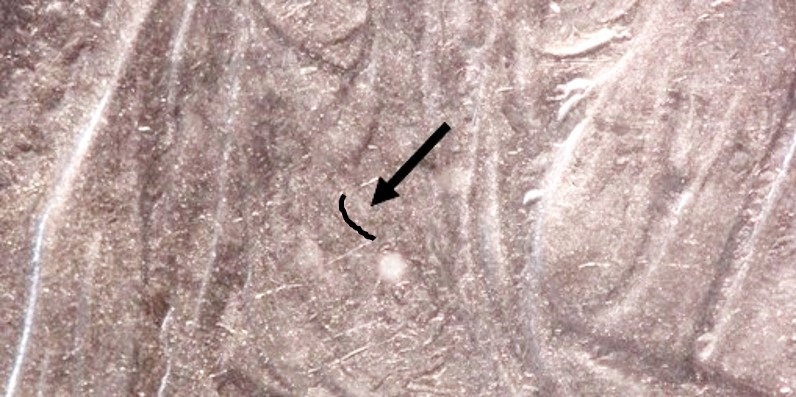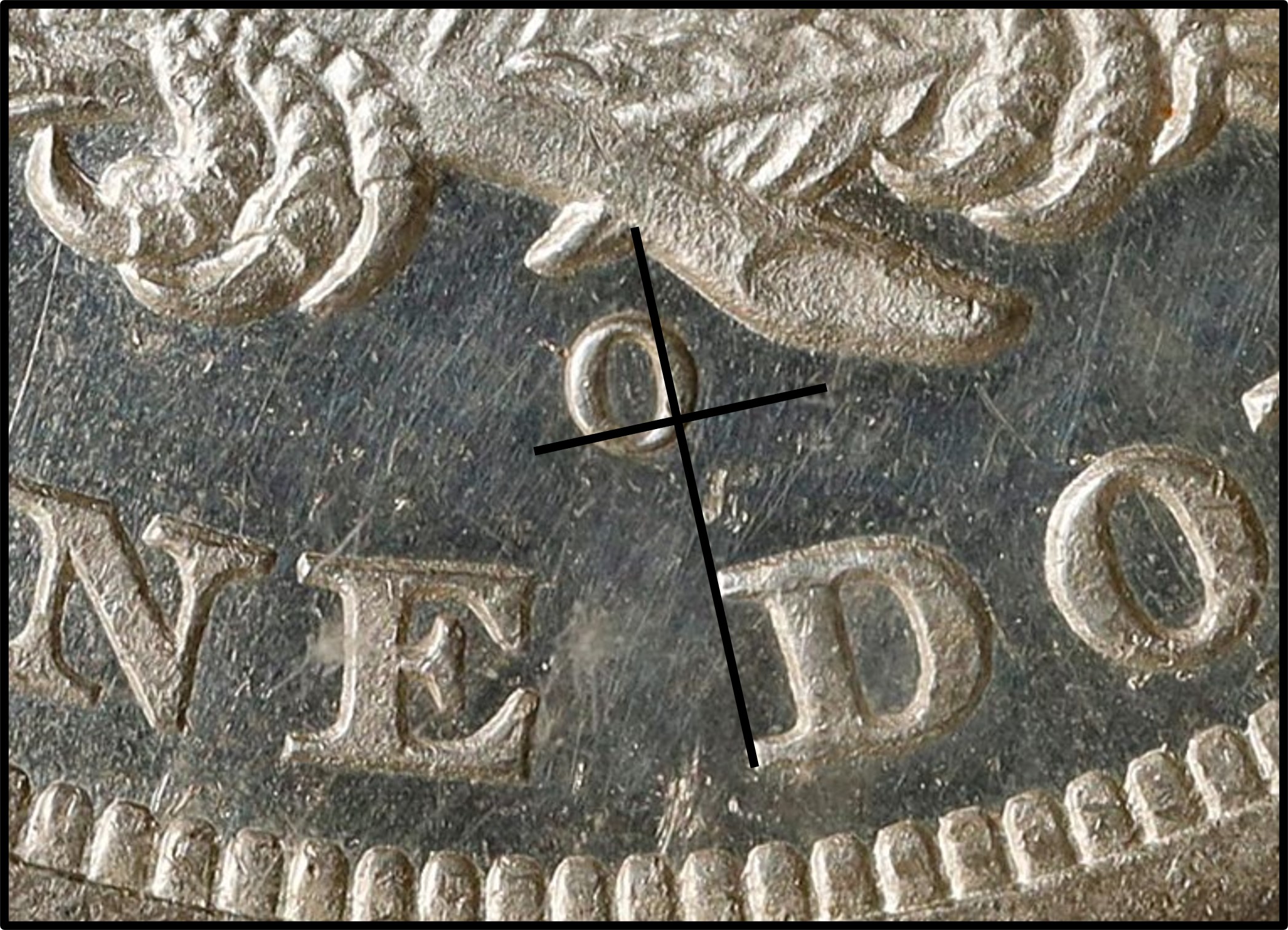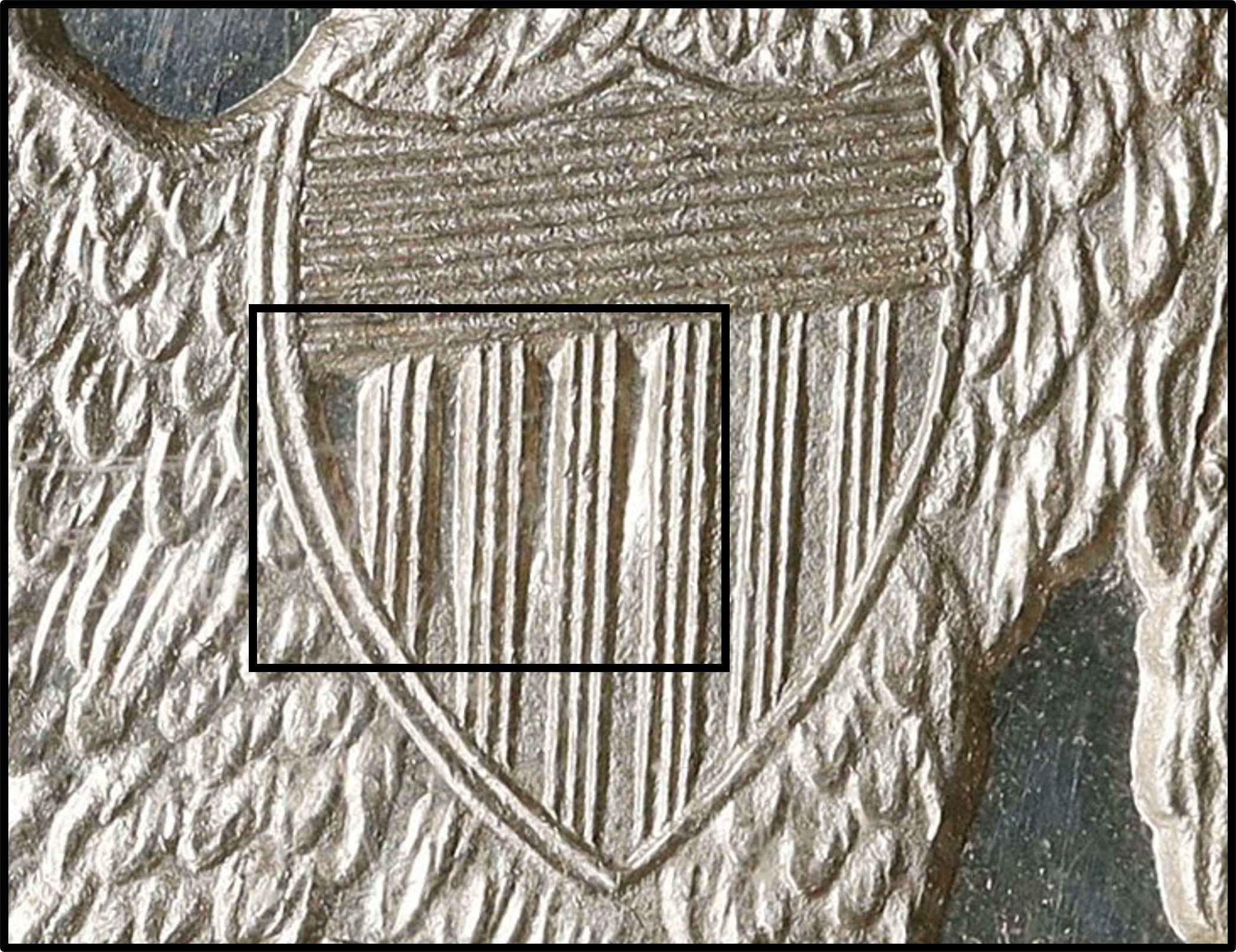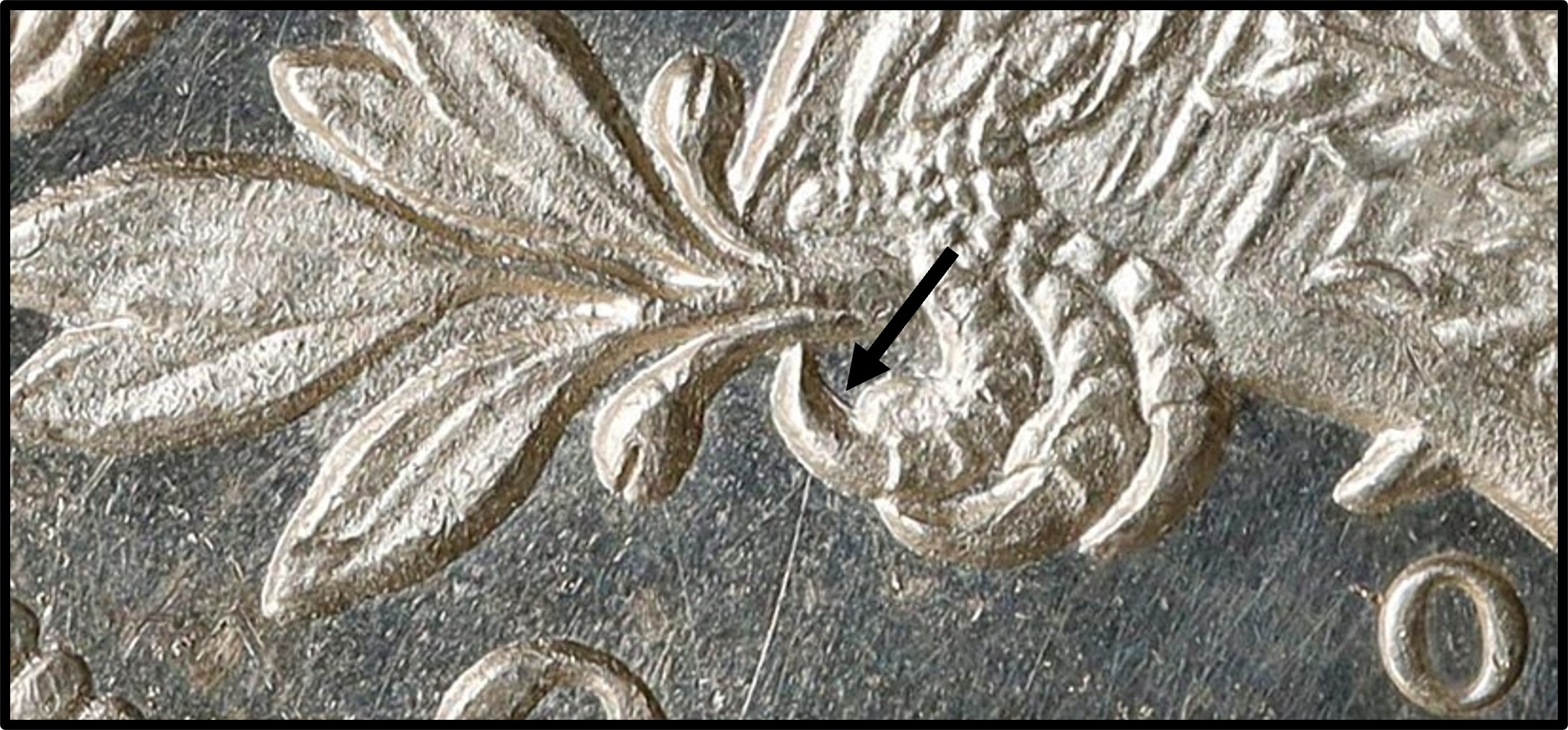|
|
Comments: This is the third of five uses of Obverse 2 and the only use of Reverse B. |
Obverse 2 The photo below shows the Obverse 2 attribution grid.  1860-O Obverse 2 attribution grid Obverse 2 exhibits minor repunching on the date, visible above the 8 and 0 and inside the upper loops of the 8 and 6. Die polish lines extend into the field from the rock above 60, almost horizontal, slanting slightly down to the left. All these markers were removed by die polishing prior to the use of Obverse 2 to strike OC-4 examples. The marker that remains after die polishing and is visible on all usages of Obverse 2 is a circular mark on Miss Libertyís gown below the left breast. This is indicated by the arrow in the following photo. This die line is shallow, but visible on most coins in AU or better. It may be difficult to see if the coin is heavily bag-marked or has excessive contact marks. Itís often difficult to see in photos. I've enhanced the die line on the photo below to aid in attribution.  1860-O Obverse 2 circular die line For simplicity, the date position should be considered as the best feature to attribute this obverse. It's unique enough to separate it from the other 1860-O obverse dies.
|
The photo below shows the mintmark position for Reverse B. The position is similar to Reverse A, but not quite as far right and therefore not quite as close to the stem.  1860-O Reverse B mintmark Reverse B shows significant signs of die rust. The shield recesses are notably unfinished except for the upper parts of recesses 1-4. The unfinished areas exhibit the die rust noted above. This is shown in the following photo. The area within the rectangle is finished whereas the rest of the shield recesses are not.  1860-O Reverse B - Finished area within the reverse shield One additional marker that can aid with attribution is a tiny die line within the left claws, shown in the following photo.  1860-O Reverse B die line in left claws
The die crack which defines die state b is shown in the following photo.  1860-O Reverse B - State b die crack No later die states have been observed. Die marriage OC-4 is found with both reverse die states. State b examples are scarce, but can be found with patient searching. They represent about 25% of the available examples. |
| Photo credits:
Obverse 2: 1860-O NGC MS60, from the Osburn-Cushing reference collection. Reverse B: 1860-O NGC AU58, from the Osburn-Cushing reference collection. |
